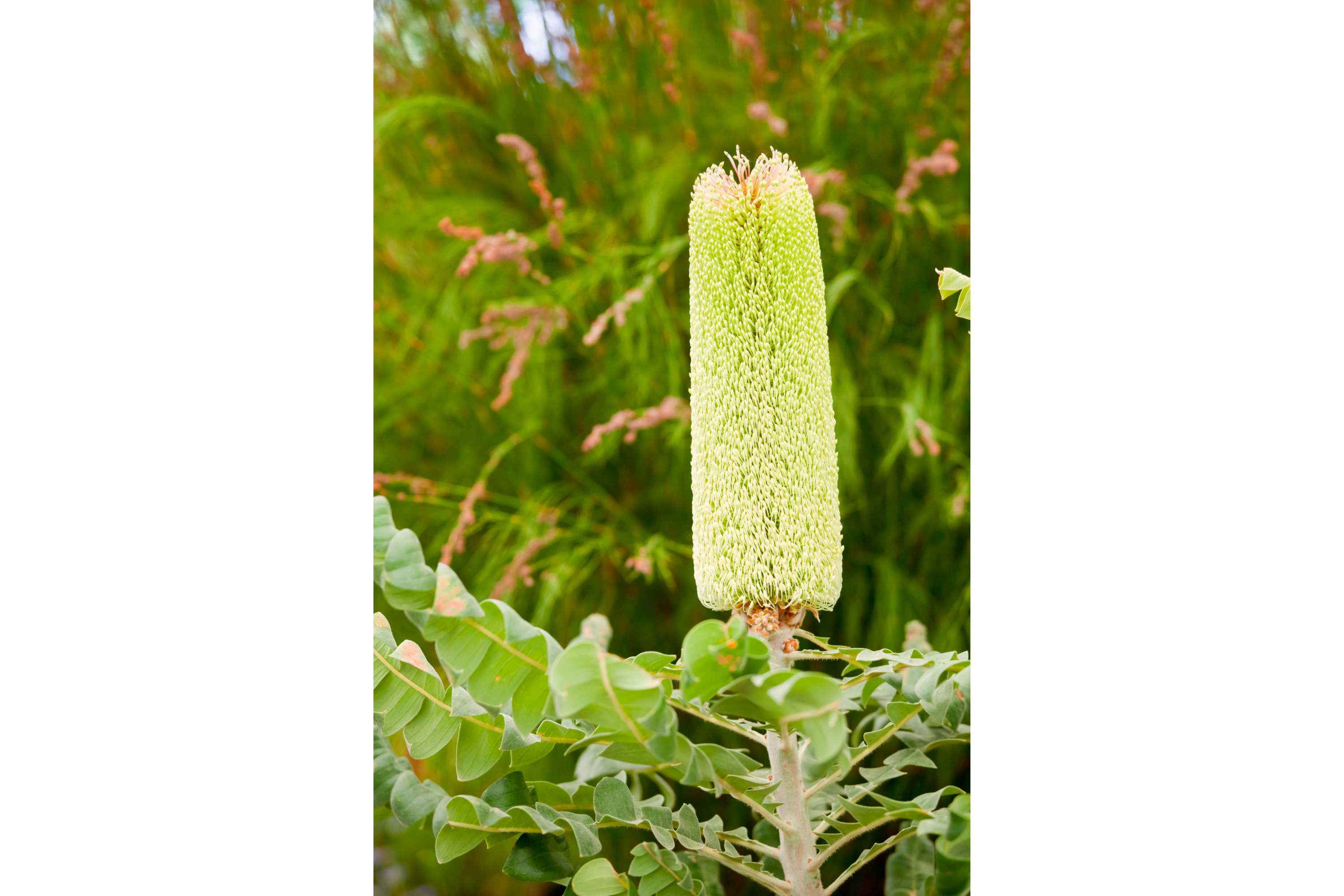Bull banksia
(Banksia grandis)

Description
Banksia grandis, commonly known as bull banksia or giant banksia, is a species of common and distinctive tree in the south-west of Western Australia. The Noongar peoples know the tree as beera, biara, boongura, gwangia, pira or peera. It has a fire-resistant main stem with thick bark, pinnatisect leaves with triangular side-lobes, pale yellow flowers and elliptical follicles in a large cone. Banksia grandis is usually a tree that typically grows to a height of 5–10 m (16–33 ft) high, sometimes to 15 m (49 ft). It is also found in the form of a stunted, spreading shrub near the south coast, and whenever it occurs among granite rocks. Its trunks are short, stout and often crooked, with the rough grey bark characteristic of Banksia. The leaves are pinnatisect 100–450 mm (3.9–17.7 in) long and 30–110 mm (1.2–4.3 in) wide on a petiole 10–35 mm (0.39–1.38 in) long, with between eight an twelve large triangular lobes on each side of the leaf. The leaves are shiny dark green on the upper surface and softy-hairy underneath. The flowers are borne in a spike that is 100–400 mm (3.9–15.7 in) long and 70–90 mm (2.8–3.5 in) wide at flowering time with hairy involucral bracts up to 25 mm (0.98 in) long at the base of the head. The flowers are pale yellow with cream-coloured styles, the perianth 26–35 mm (1.0–1.4 in) long and the pistil 35–40 mm (1.4–1.6 in) long. Flowering occurs from October to January and the follicles are elliptical, 17–25 mm (0.67–0.98 in) long, 3–10 mm (0.12–0.39 in) high and 6–12 mm (0.24–0.47 in) wide on a massive cone. The old flower fall early and the follicles usually open as they mature. A seed from the south coast raised in Kings Park had retained its spreading habit as at 1981. Bull banksia grows in woodland and heath on the coastal plain between Mount Lesueur and Cape Leeuwin, east to Cape Riche and inland to Woodanilling. It is common in the jarrah forest on the Darling Range. Banksia grandis was first formally described in 1798 by Carl Ludwig Willdenow in the fourth edition of the book Species Plantarum. The specific epithet (grandis) is a Latin word meaning "great", "large" or "tall". In 1891, Otto Kuntze, in his Revisio Generum Plantarum, rejected the generic name Banksia L.f., on the grounds that the name Banksia had previously been published in 1776 as Banksia J.R.Forst & G.Forst, referring to the genus now known as Pimelea.
Taxonomic tree:







